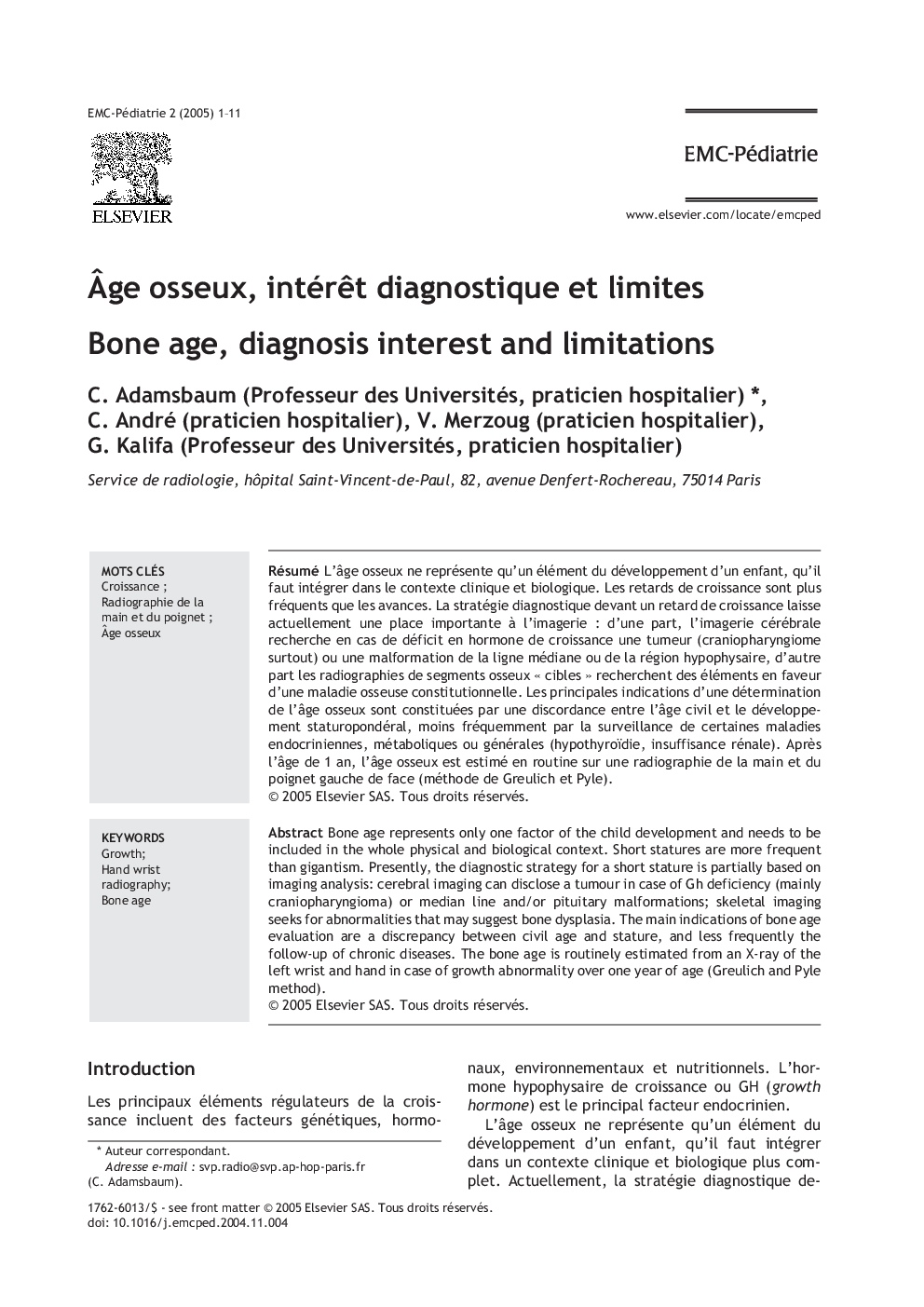| Article ID | Journal | Published Year | Pages | File Type |
|---|---|---|---|---|
| 9373052 | EMC - Pédiatrie | 2005 | 11 Pages |
Abstract
Bone age represents only one factor of the child development and needs to be included in the whole physical and biological context. Short statures are more frequent than gigantism. Presently, the diagnostic strategy for a short stature is partially based on imaging analysis: cerebral imaging can disclose a tumour in case of Gh deficiency (mainly craniopharyngioma) or median line and/or pituitary malformations; skeletal imaging seeks for abnormalities that may suggest bone dysplasia. The main indications of bone age evaluation are a discrepancy between civil age and stature, and less frequently the follow-up of chronic diseases. The bone age is routinely estimated from an X-ray of the left wrist and hand in case of growth abnormality over one year of age (Greulich and Pyle method).
Keywords
Related Topics
Health Sciences
Medicine and Dentistry
Perinatology, Pediatrics and Child Health
Authors
C. (Professeur des Universités, praticien hospitalier), C. (praticien hospitalier), V. (praticien hospitalier), G. (Professeur des Universités, praticien hospitalier),
